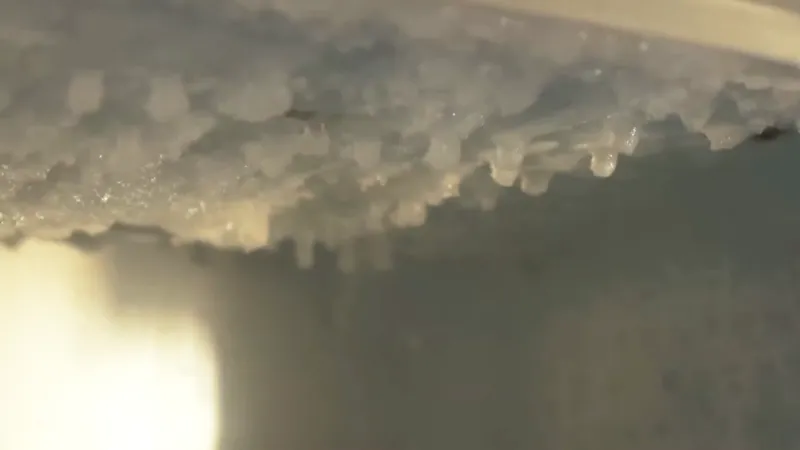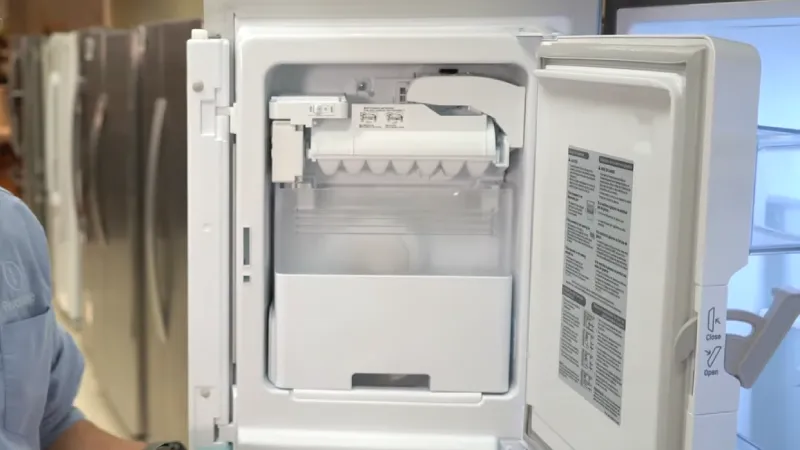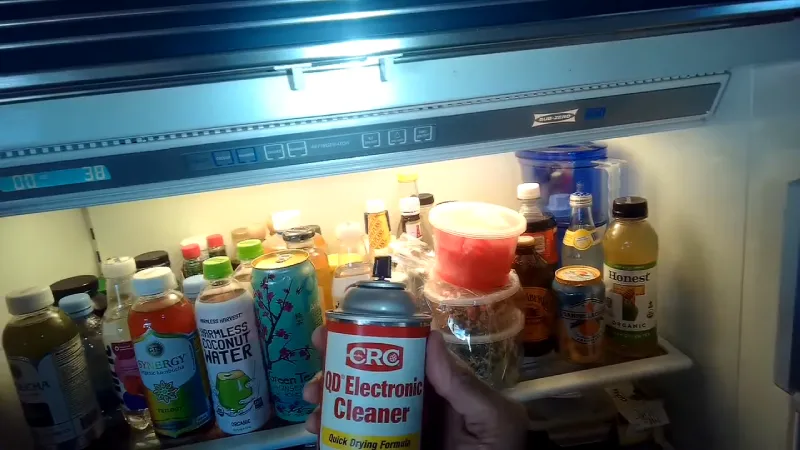Defrost Problem in Refrigerator and Solutions
Defrost problems in refrigerators can cause a range of issues, from decreased cooling efficiency to the accumulation of frost and ice. When the defrost system in a refrigerator fails, it can lead to the buildup of ice in both the fridge and freezer compartments, obstructing the overall functioning of the appliance.
It is crucial to address these issues as soon as possible, as they can worsen over time and potentially cause damage to the refrigerator. In this article, we will take an in-depth look at the common causes and symptoms of defrost problems in refrigerators, and provide tips and solutions to help you keep your appliance running smoothly.
You'll Learn About
Defrost Problem in Refrigerator
A defrost problem in a refrigerator occurs when the defrost system fails to melt the frost collected on the coils. The frost can build up to the point where it blocks airflow and the refrigerator stops cooling.
The cause of a defrost problem in a refrigerator can be due to a failed defrost control board, which determines the frequency of the defrost cycle. Other possible causes include a faulty defrost heater or thermostat.

To diagnose the problem, it is recommended to test the defrost heater, defrost thermostat, and thermistor. In most cases, fixing a defrost problem in a refrigerator requires the expertise of a repair professional.
The cost and duration of the repair will depend on the scope of work.
Causes of Defrost Problems in Refrigerators
A defrost problem in a refrigerator can cause significant inconvenience and spoilage of food. A refrigerator works by removing heat from the interior of the fridge and expelling it to the outside.
If the refrigerator is not able to defrost itself, frost can build up on the coils, reducing the efficiency of the cooling system and eventually causing the fridge to stop working. In this article, we’ll discuss the common causes of defrost problems in refrigerators.

Failed Defrost Control Board
The defrost control board is the main component responsible for controlling the defrost cycle. If the board fails, the refrigerator will not go into the defrost cycle, leading to the build-up of ice on the coils. Before replacing the defrost control board, first test the defrost heater and defrost thermostat to determine if they are working properly.
Faulty Defrost Heater or Thermostat
The defrost heater is responsible for melting the frost on the coils, while the defrost thermostat monitors the temperature of the coils and controls the defrost cycle. If either the defrost heater or thermostat fails, the frost will not melt, leading to the build-up of ice and reducing the efficiency of the cooling system.
Clogged Drain System
A clogged drain system can cause water from the defrost cycle to back up, leading to the formation of ice on the coils. The clogging can be caused by food particles, dirt, and debris that have accumulated over time.
Broken Evaporator Fan Motor
The evaporator fan motor is responsible for circulating air over the coils to maintain a consistent temperature inside the fridge. If the motor fails, the air will not circulate, causing the frost to build up on the coils and reducing the efficiency of the cooling system.
Damaged Wiring
Damaged wiring can cause the defrost system to fail, leading to the build-up of ice on the coils. This can be caused by a number of factors, including exposure to moisture, rodents, and mechanical damage.
fixing a defrost problem in a refrigerator requires the expertise of a professional. Common causes of defrost problems include a failed defrost control board, faulty defrost heater or thermostat, clogged drain system, broken evaporator fan motor, and damaged wiring. If you’re experiencing a defrost problem with your refrigerator, it’s best to have it repaired as soon as possible to avoid further damage and spoilage of food.
Symptoms of Defrost Problems in Refrigerators
Frost Build-up on the Coils
One of the most noticeable symptoms of a defrost problem in a refrigerator is frost build-up on the coils. This happens when the defrost system fails to turn on or work properly, causing the temperature inside the freezer to drop too low. As a result, frost accumulates on the coils, making it difficult for the refrigerant to absorb heat and cool the food inside.
Warm or Room Temperature Food
Another symptom of a defrost problem is warm or room-temperature food in the refrigerator or freezer. This is a direct result of the frost build-up on the coils, which interferes with the refrigerant’s ability to cool the food. As a result, the food in the refrigerator or freezer may become warm or even spoil, leading to food waste and potentially serious health concerns.
High Energy Bills
A defrost problem in a refrigerator can also lead to higher energy bills. When the defrost system fails, the refrigerator has to work harder to cool the food, using more energy and driving up your electricity bill. In some cases, the extra energy used by the refrigerator can also lead to overheating and other problems, which can be costly to repair.
Excessive Noise From the Refrigerator
Another symptom of a defrost problem is excessive noise from the refrigerator. This can occur when the defrost system fails to turn on, causing the refrigerant to circulate in the freezer more frequently and making more noise as it does so. In some cases, the noise may also be the result of a broken fan or other mechanical issue, so it’s important to diagnose the cause of the noise and repair it promptly.
Refrigerator Not Cooling
Finally, one of the most obvious symptoms of a defrost problem in a refrigerator is the unit simply not cooling. This can be the result of any of the other symptoms described above, or it may be caused by a more serious issue, such as a failed compressor or broken refrigerant line. If your refrigerator is not cooling, it’s important to diagnose the cause and repair the issue promptly to avoid food waste and potential health concerns.
recognizing the symptoms of a defrost problem in a refrigerator is the first step in fixing the issue and preventing further problems. If you notice any of the above symptoms, it’s important to call a professional repair technician promptly to diagnose and repair the issue.
Troubleshooting Defrost Problems in Refrigerators
A refrigerator’s defrost system helps remove any built-up frost and ice on the evaporator coils, allowing the unit to function efficiently. When this system fails, the result can be a build-up of frost and decreased cooling performance.
To diagnose and fix the problem, it’s important to understand the various components involved in the defrost system and how they work together. Here are some common steps to take when troubleshooting defrost problems in refrigerators:
Testing the Defrost Heater and Thermostat
The defrost heater is responsible for melting any frost that has accumulated on the evaporator coils. Accessing them isn’t that hard though. The thermostat monitors the temperature of the coils and turns on the defrost heater as needed. To test the defrost heater, you can use an ohmmeter to measure the resistance of the heating element.
If the readings are within specifications, the heater is functioning properly. To test the thermostat, you can use a multimeter to measure the temperature at which the thermostat opens and closes. If the thermostat is faulty, it may not turn on the defrost heater when needed.
Checking the Evaporator Fan Motor
The evaporator fan motor circulates air over the evaporator coils, which helps to distribute the cool air throughout the refrigerator. If the fan motor is faulty, it can result in a build-up of frost on the coils.
To test the fan motor, you can use a multimeter to measure the resistance of the motor. If the readings are outside of specifications, the fan motor may need to be replaced.
Examining the Drain System
The drain system helps remove any excess water that accumulates during the defrost cycle. If the drain system is clogged, water can accumulate and freeze, causing frost to build up on the evaporator coils. To check the drain system, you can clear any obstructions and flush the drain with hot water.
Testing the Wiring
The defrost system relies on a series of electrical connections to function properly. If any of the wiring is damaged, the defrost system may not function correctly. To test the wiring, you can use a multimeter to check the continuity of the electrical connections.
Verifying the Defrost Control Board
The defrost control board is responsible for controlling the defrost cycle. If the control board is faulty, the defrost system may not function properly. To verify the control board, you can use a multimeter to check the continuity of the electrical connections.
If the readings are outside of specifications, the control board may need to be replaced.
diagnosing and fixing defrost problems in refrigerators can be a complicated process, but by understanding the various components involved in the defrost system and following the steps outlined above, you can identify and repair the problem. However, it is important to note that some of these tasks may require technical skills, so it is recommended to call a professional if you are not comfortable performing them.
Repairing Defrost Problems in Refrigerators

When to Call a Professional
While some of the simple troubleshooting steps outlined above may be able to help resolve your defrost problem, some issues can be more complex and require professional attention. If you are unsure of what the issue is or how to repair it, it is best to call a professional.
This is particularly important if you are dealing with electrical components, as this can be dangerous if handled incorrectly. A professional will have the tools and expertise to safely diagnose and repair the issue, ensuring that your refrigerator is running efficiently and safely.
Cost of Repairs
The cost of repairs for a defrost problem in a refrigerator will depend on the specific issue and the complexity of the repair. In general, simple repairs such as replacing a faulty thermostat or cleaning a clogged drain system will be relatively inexpensive.
However, if you need to replace a more complex component such as the defrost control board, the cost of repairs can be higher. It is important to consider the age of your refrigerator when deciding whether to repair or replace it, as older refrigerators may not be worth the investment in repairs.
Importance of Regular Maintenance
Regular maintenance is important to help prevent defrost problems in your refrigerator. This can include cleaning the coils, checking the drain system, and verifying that the evaporator fan motor is working correctly.
Keeping your refrigerator clean and free of debris can also help to prevent defrost problems, as this can cause clogs in the drain system. Regular maintenance can help ensure that your refrigerator is running efficiently and can extend its lifespan, saving you money in the long run.
defrost problems in refrigerators can be caused by a variety of factors, including faulty defrost control boards, thermostats, and evaporator fan motors. Understanding the symptoms and causes of these issues, as well as how to troubleshoot and repair them, is important to keep your refrigerator running efficiently. However, if you are unsure of what the issue is or how to repair it, it is best to call a professional to avoid any potential danger or damage to your refrigerator.
Prevention of Defrost Problems in Refrigerators
Preventing defrost problems in refrigerators is essential for ensuring the longevity and efficiency of the appliance. Regular maintenance and proper usage of the refrigerator can help avoid issues with the defrost system. Here are five key tips to help prevent defrost problems in refrigerators:
Cleaning the Coils Regularly
Regular cleaning of the coils helps to prevent the buildup of dust and debris that can clog the defrost drain system. This can be done by wiping the coils down with a clean cloth or using a vacuum to remove any buildup.
Regular Maintenance Checks
Regular maintenance checks can help identify any potential problems before they become serious issues. These checks should include a thorough cleaning of the coils and a check of the defrost system.
Proper Use of the Refrigerator
Proper usage of the refrigerator can also help prevent defrost problems. This includes avoiding overloading the appliance, leaving enough space around it for air to circulate, and not blocking the air vents.
Avoiding Overloading the Refrigerator
Overloading the refrigerator can cause the defrost system to work harder, leading to potential issues. It is important to avoid overloading the appliance and to store items in a way that allows for proper air circulation.
Proper Temperature Settings
Setting the temperature correctly is also important for preventing defrost problems. The temperature should be set to the recommended level for the type of food being stored. Keeping the temperature too low or too high can cause the defrost system to work harder and lead to potential issues.
By following these tips, you can help prevent defrost problems in your refrigerator and ensure that it continues to operate efficiently for years to come. If you are having issues with your defrost system, it is important to seek the assistance of a professional to avoid potential damage to your appliance.
Conclusion
Defrost problems in refrigerators can be a major inconvenience, leading to frost build-up, warm food, high energy bills, excessive noise, and a lack of cooling. Understanding the common causes, such as failed defrost control boards, faulty defrost heaters or thermostats, clogged drain systems, broken evaporator fan motors, and damaged wiring, is key to effectively troubleshooting and repairing the problem.
However, it is often best to call a professional if you are unsure of how to proceed. Regular maintenance, such as cleaning the coils and conducting regular checks, can help prevent defrost problems and ensure your refrigerator continues to function properly.
By following these tips, you can avoid costly repairs and keep your food fresh and properly stored.

